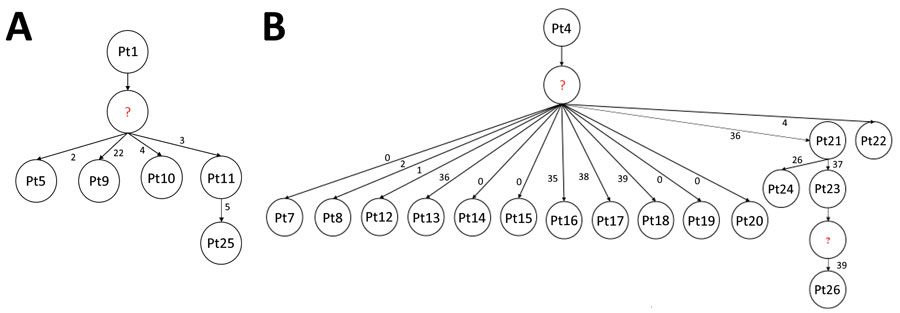Volume 29, Number 8—August 2023
Synopsis
Outbreak of NDM-1– and OXA-181–Producing Klebsiella pneumoniae Bloodstream Infections in a Neonatal Unit, South Africa
Figure 4

Figure 4. Transmission networks among 22 patients with outbreak-associated blaOXA-181 sequence type 307 (A) and blaNDM-1 sequence type 152 (B) clones of Klebsiella pneumoniae isolated from a neonatal unit during outbreak, South Africa, October 2019–February 2020. Question marks denote missing isolates; numbers along branches indicate number of single-nucleotide polymorphisms between index isolate and other isolates.
1Members of Baby GERMS-SA are listed at the end of this article.
Page created: June 22, 2023
Page updated: July 20, 2023
Page reviewed: July 20, 2023
The conclusions, findings, and opinions expressed by authors contributing to this journal do not necessarily reflect the official position of the U.S. Department of Health and Human Services, the Public Health Service, the Centers for Disease Control and Prevention, or the authors' affiliated institutions. Use of trade names is for identification only and does not imply endorsement by any of the groups named above.